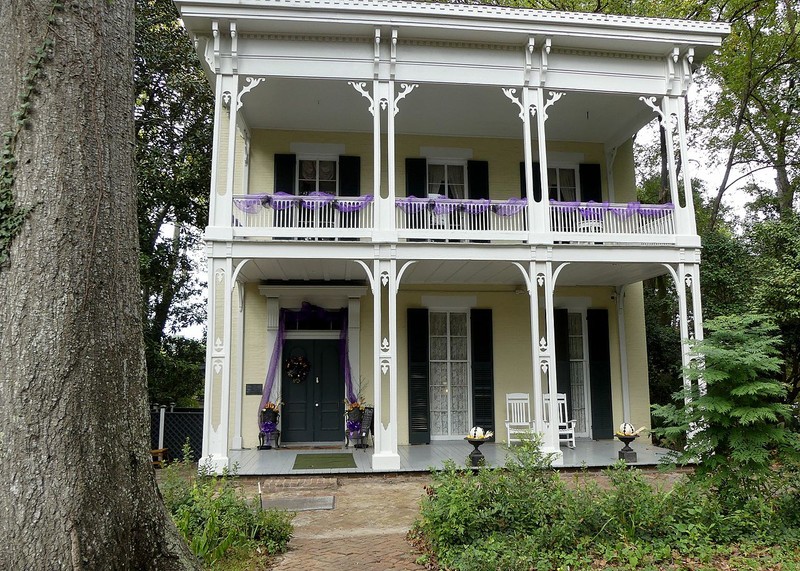McRaven House
Introduction
Text-to-speech Audio
Images
McRaven House dates back to 1797 and is the best-preserved antebellum home in Vicksburg

Backstory and Context
Text-to-speech Audio
The first part of the house was built in 1797 by Andrew Glass. At that time, the home was a simple two-story brick structure consisting of a kitchen on the first floor and a bedroom on the second. Glass was apparently a highway thief, robbing travelers on the road along the Natchez Trace Trail, which ran from Natchez, Mississippi to Nashville, Tennessee. When Glass went to sleep he pulled up the ladder to the second floor to protect himself in from being ambushed. In 1836, the house was expanded by Sheriff Stephen Howard, who added a stairway, bedroom, dining room, and a two-story porch. Sadly, his wife, Mary Elizabeth, died in August that year after giving birth.
The last phase of expansion was completed in 1849 by John H. Bobb, who appears to have bought the property from his brother, William, in 1844. Bobb was a successful brick maker and sawmill owner. He added the parlor, master bedroom, men's changing area, flying wing staircase, and the Italianate facade which is viewable today. By 1869, Bobb had passed away and his widow sold the house to a local machinist and inventor, William Murray. Murray's daughters, who never married, lived in the house until 1960. The house was restored in the 1970s. It is unclear when the property became open to the public. To enhance the appeal to tourists, tour guides share the stories of locals who claim that the ghosts of Mary Elizabeth, John Bobb, and Andrew Glass haunt the house.
Sources
"About." McRaven House. Accessed January 23, 2021. https://www.mcraventourhome.com/history.
McCahon, Mary. "Bobb House." National Park Service - National Register of Historic Places Nomination Form. January 8, 1979. https://npgallery.nps.gov/GetAsset/52f00a0a-d142-46fd-8893-14477e8f9e1d.
Wikimedia Commons: https://commons.wikimedia.org/wiki/File:McRaven_House.jpg
